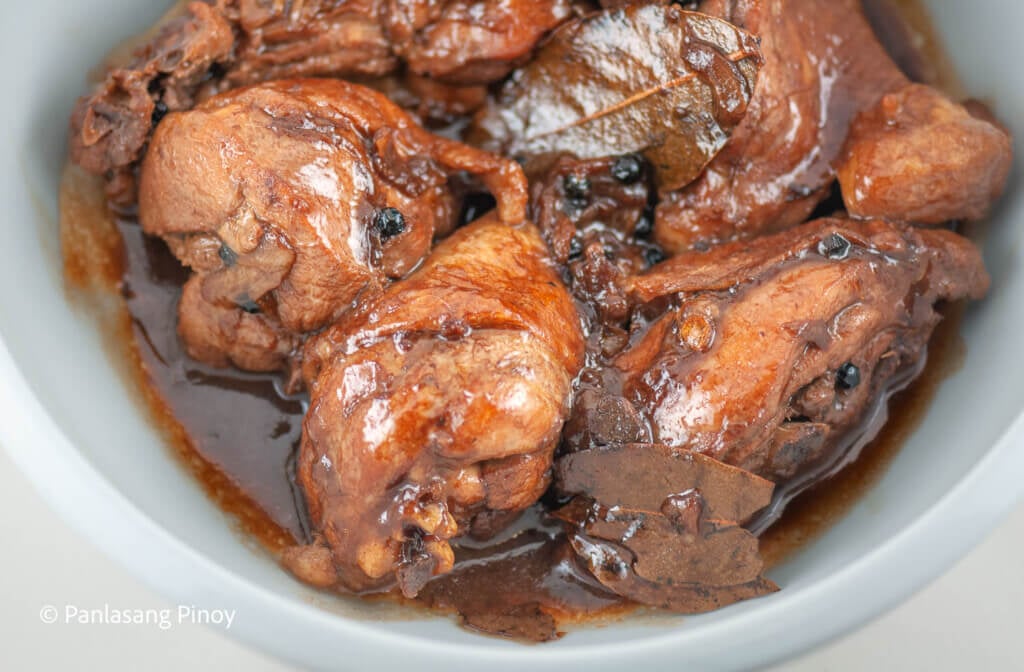
Adobo refers to the Filipino dish and cooking technique where ingredients are braised in vinegar with salt (usually soy sauce), garlic, peppercorns, and bay leaves. Almost anything can be adobo; meat, fish, seafood, vegetables. You'll find endless variations on adobo across the Philippines, each with their own unique flavors, each with their own unique flavors, ingredients, spices, and textures.
You don't have to choose between CHICHKEN or PORK adobo. You can HAVE BOTH, all in one pan.
Considered the unofficial national dish of the Philippines, it's known for its distinct tangy and savory flavor, resulting from the braising process that tenderizes the ingredients.
Scar meat: Add just enough oil to thinly coat the bottom of large, heavy-bottomed pot or braising pan over medium heat. Add pork belly slices to the pan, working in batches to avoid overcrowding. Sear prok, flipping as needed, until golden brown on all sides. Remove pork belly from pan and set aside.
Working in batches, add chiken thighs and legs to the excess oil and pork fat. Sear chicken, turning as needed, until golden brown on all sides. Remove chicken from pan and set aside.
Cook aromatics: In the same pan, add garlic cloves and cook, stirring frequently, until evenly and lightly blistered. Add black peppercorns and toast for about 2-3 minutes.
Simmer chicken and pork: Increase heat to medium-high. Pour in vinegar and soy sauce, stirring with a wooden spoon to gently scrape up the browned bits at the bottom of the pan. Add pork and chicken pieces, water, and bay leaves to the pan. Once liquid is boiling, reduce heat to medium-low , maintaining a stimmer. Cover pan and continue simmering until meat is tender, about 1 hour and 30 minutes.
Taste the sauce and adjust seasonings as needed. Discard bay leaves and serve adobo with hot steamed rice.